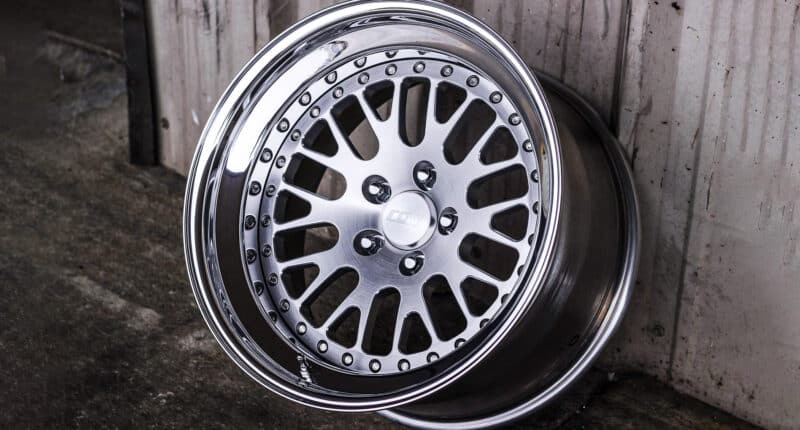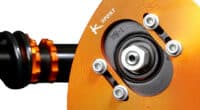As you probably already know, deep dish wheels refer to a style of wheel design where the lip extends outward from the center of the wheel, creating a deeper or wider appearance.
This design gives the wheels a more aggressive and stylish look, making it popular in the car customization scene.
While there’s no doubt that the wide lip contributes to a more aggressive stance, it’s questionable whether these wheels help to improve performance.
In this article, we’ll dive deeper into the matter and find out whether deep dish rims for cars are just for aesthetic purposes or if they actually offer any performance benefits.
What Are Deep Dish Wheels?

Dished wheels aren’t just a round piece of metal, they have depth, a “deep dish” between the outer lip and the spokes.
A negative offset is common on these wheels, as that moves the mounting hub behind the centerline, giving them greater width and letting them stick out as far as possible so they can properly fill up the wheel arches.
The big lip not only makes the wheel look wider, it also adds a bit of depth and visual appeal to the car itself.

Deep dish wheels can be of single-piece construction, but if you want a really wide lip that extends far beyond the face of the wheel, a two or three-piece wheel is the way to go.
You might have heard about the Volk TE37 deep dish, known for its iconic design and revered by car enthusiasts, but the options don’t stop there.
There’s a wide array of dished wheels for every taste and style, ranging from cheap to eye-wateringly expensive.
Pros of Deep Dish Wheels
Now, let’s dissect the compelling narrative of deep dish wheels as we find out what lies beyond the glitz and glamour, looking at their strengths and weaknesses.
In the interest of starting off on a positive note, we’ll begin with the pros of deep dish wheels.
Motorsport Origins
As mentioned, the best deep dish wheels often have a multipiece design, and they were originally intended for motorsport use, making it easier for race teams to customize a set of wheels to suit their needs.
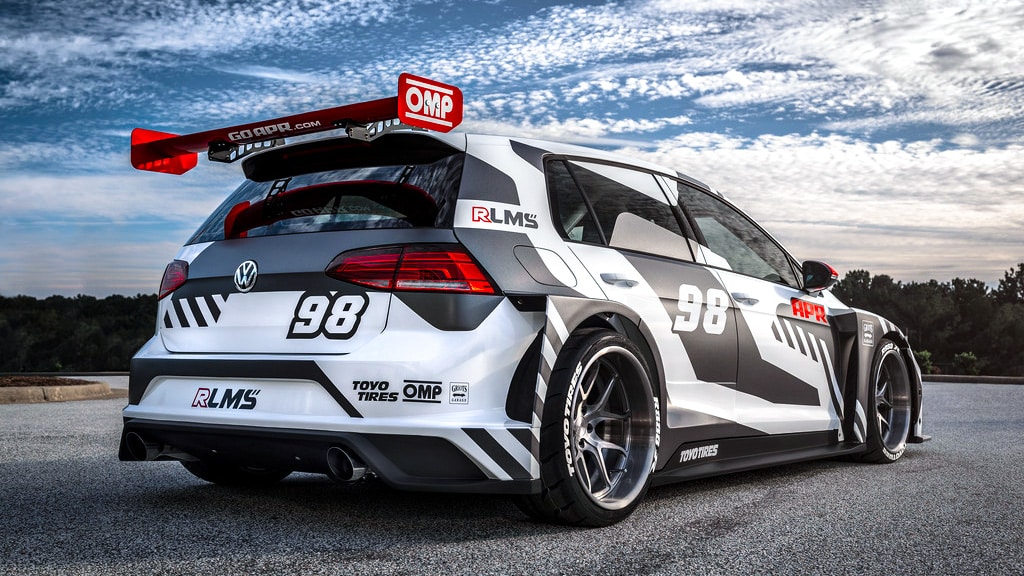
In addition to the ease of customization, it also made it easy to repair a damaged wheel, and they were lightweight compared to other options.
Car enthusiasts then adopted the style, and as it became easier and cheaper to produce multipiece wheels, their popularity grew.
However, with time, motorsports have for the most part moved on to flow-formed and forged monoblock wheels, which tend to be lighter and stronger.
So, do rims with wide lips have any performance benefits over regular wheels? They certainly used to, but that argument doesn’t really hold water anymore.
Aesthetics Beyond Measure
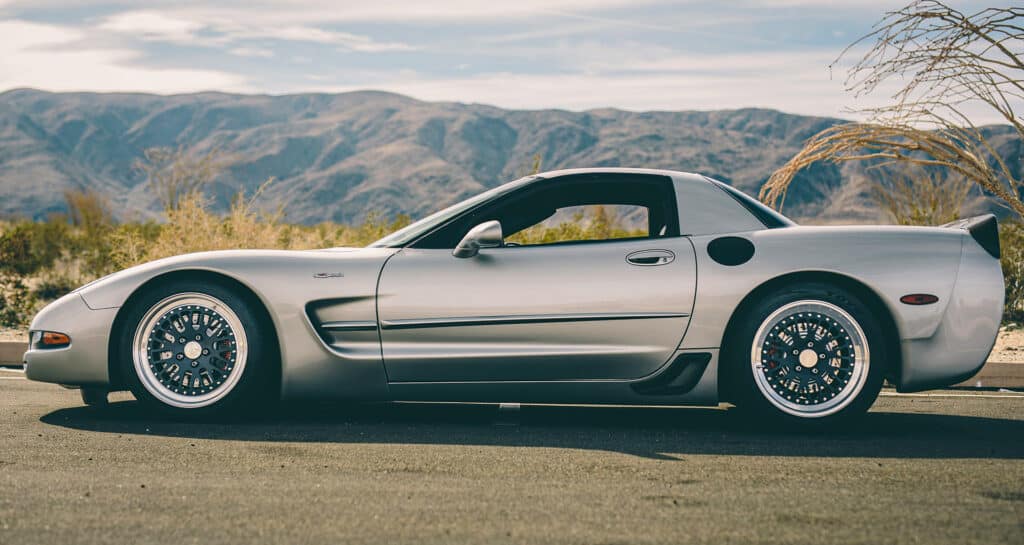
Aesthetics are the number one reason why gearheads choose deep dish wheels for their car builds.
For a while in the stance realm, these wheels were considered a must, as they don’t merely roll; they make an entrance.
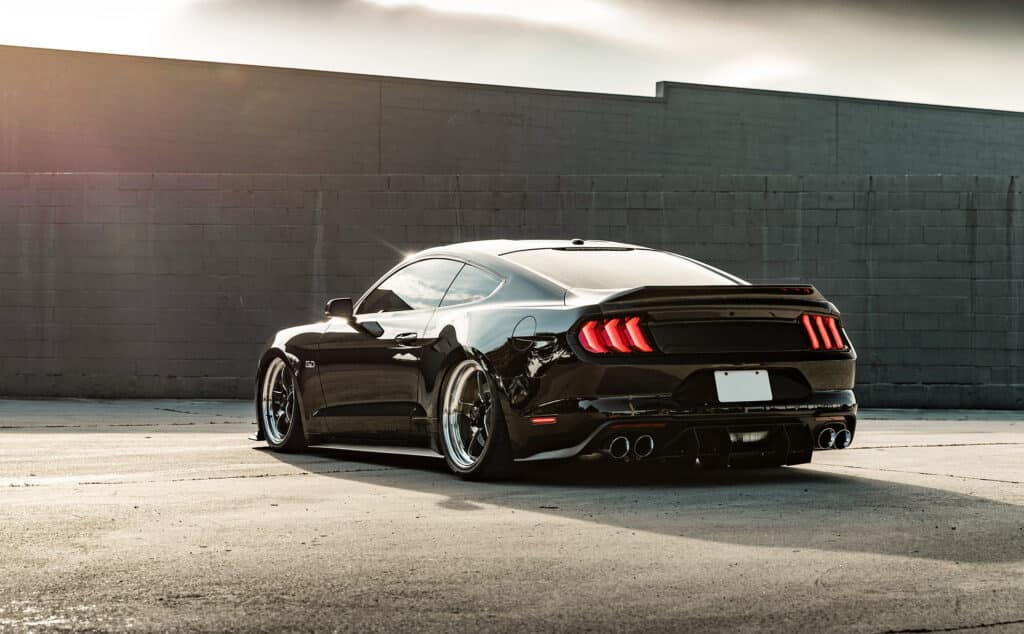
The cool thing is that they can make every car look better, whether it’s JDM, European, or even American muscle — imagine a modern Ford Mustang adorned with 5×114.3 deep dish wheels.
What American car lover wouldn’t be envious of Mustang deep dish wheels? Perhaps those driving something like a C4 or C5 Corvette rolling on deep dish wheels.
Customization and Style Variations
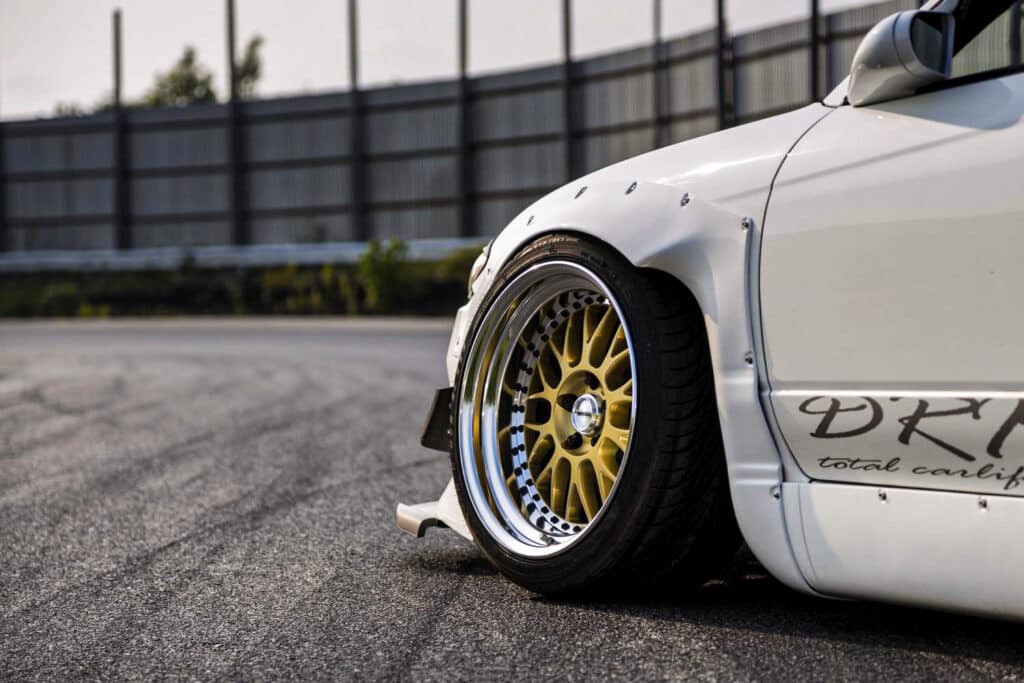
Having established that these wheels are mostly about aesthetics, you probably won’t be surprised to hear that in the world of deep dish wheels, customization is key.
Multipiece wheels offer tons of customization options for colors, hardware, and lip styles, such as stepped lips, flat lips, and slant lips.
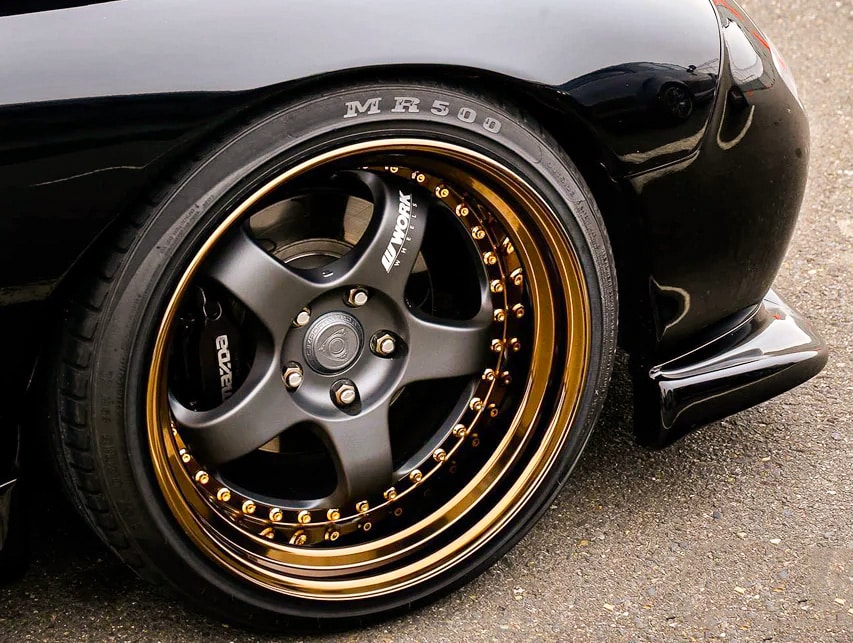
As any car enthusiast knows, the zenith of deep dish wheels lies in their ability to serve as a canvas for your car’s expression, whether you favor the sleek simplicity of deep dish 5-spoke wheels or the more intricate patterns.
Even SUV owners can roll on stylish, big-lipped rims, and they’re also available from renowned performance wheel manufacturers, such as Enkei and Work.
Dished Wheels: Cons
For all their visual allure, deep dish wheels do harbor some quirks that you should absolutely be aware of.
Even more so if you want to avoid unwanted changes in your suspension geometry that might lead to chewed-up tires and steering issues.
Altered Scrub Radius
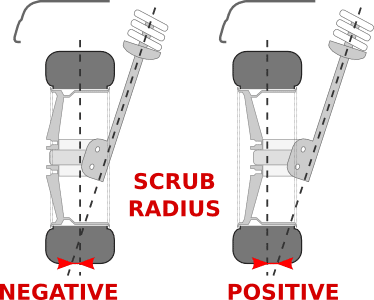
Scrub radius refers to the distance between the centerline of the tire and the point where the tire contacts the road, or in other words, the distance from the center of the tire’s contact patch to the point where the steering axis intersects the road.
Whether you’re driving down the road in a stanced car, rolling on 5×112 deep dish wheels, or a classic hatchback with 4×100 deep dish wheels, these wheels often come with limited backspacing, which can alter the scrub radius.
Drift cars typically develop a positive scrub radius and increased wheel track when fitted with dished rims. This will also increase steering effort.
Risk of Curb Damage
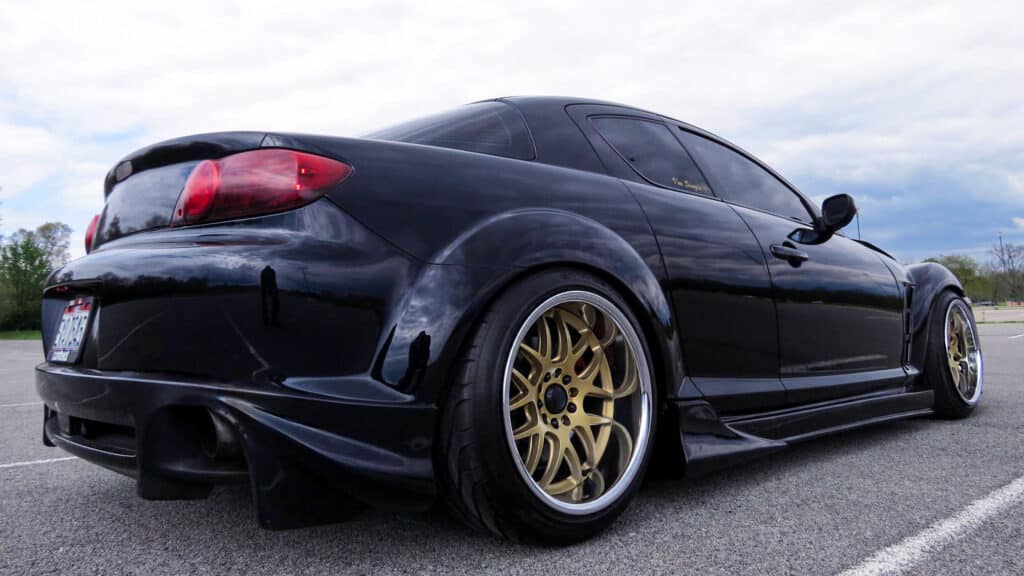
Seeing as these rims are typically broader and have minimal backspacing, they may sometimes extend beyond the wheel arches, exposing your wheel flange to unforeseen encounters with curbs.
Even if it’s not sticking outside the arch, many owners run a narrower set of tires to get that proper stretched tire look.
Again, the wheel flange is exposed, and you’ll risk scraping it on curbs as you park, slamming it into the edge of potholes when driving, and there’s probably a bunch of other scenarios that all have the same outcome.
Cleaning Nightmare

While they’re unquestionably striking, the allure of deep dish wheels also comes with a demand for meticulous and constant upkeep.
If you opt for a shiny chrome lip, you’ll soon find out that your wheels act as magnets for dirt and brake dust, which accumulates surprisingly quickly.
The good thing is that those who decide to buy a set of deep dish wheels for trucks or cars will soon be able to call themselves expert car detailers.
Should You Buy Low Offset Rims?
There’s a vast selection of aftermarket deep dished wheels to suit every taste, and they remain a popular choice among those looking to customize their cars.
Deep dish wheels are visual storytellers that can transform your car into a work of art and will contribute massively to the narrative of your car’s journey.
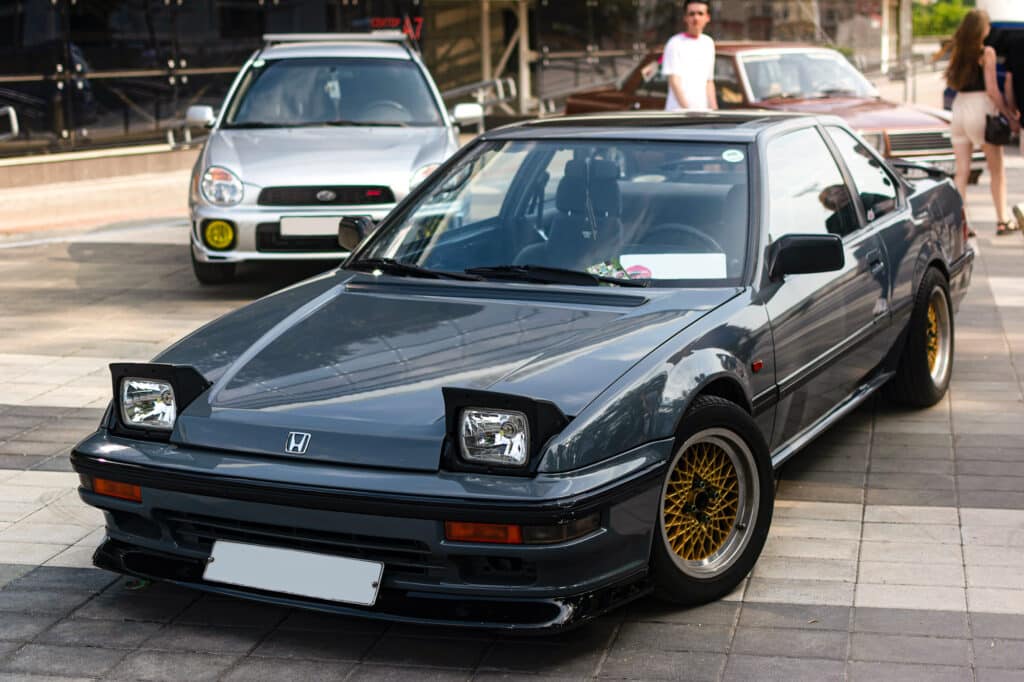
But, and it’s a pivotal but, they do come with their share of challenges. The altered scrub radius, the risk of curb damage, and the cleaning issues will all keep you on your toes.
Would you compromise driveability for the sake of aesthetics? Or would you look to find a balance between the two? Let us know in the comments below.
